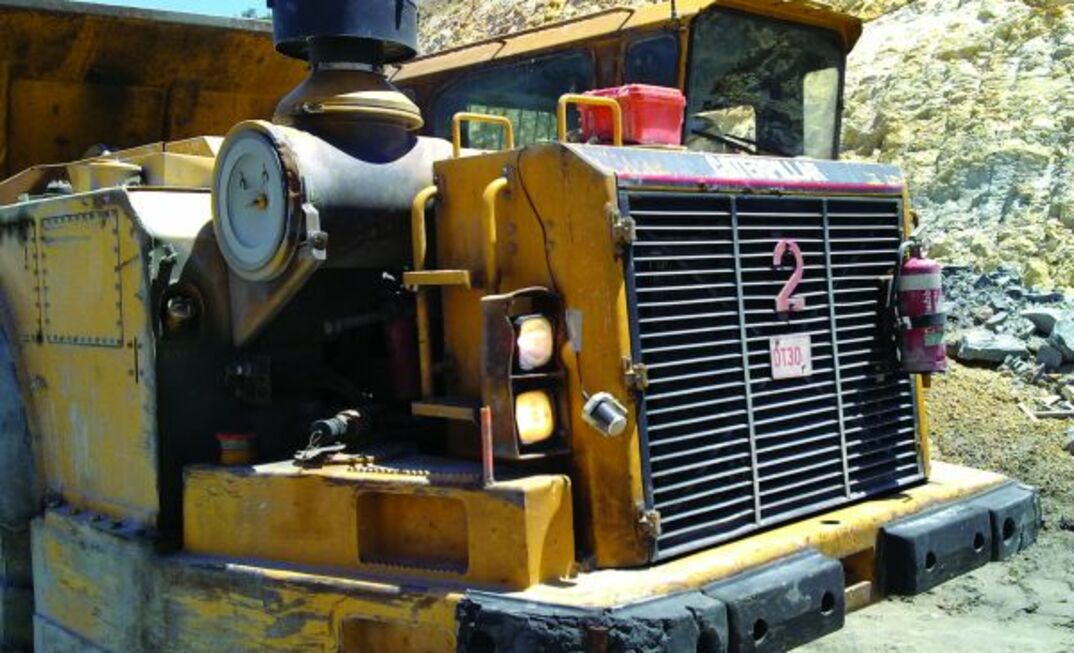Published in the September 2010 Australian Longwall Magazine
The company’s new UTM – which stands for Underground TKPH (tonne kilometres per hour) Monitor – system is designed to allow underground mine operators, and Bridgestone as a supplier, to get an accurate handle on key operating factors influencing tyre life and operating safety.
Increasing demand for improved productivity, operating efficiency and safety in underground mining has led to significantly improved equipment capability in terms of load and speed – along with a dramatic increase in tramming distances.
To meet these demands, purpose-designed tyres have been developed to handle the increased loads and operating severity in underground operations.
However, until now, the underground mining sector has lacked an operating data system capable of monitoring equipment activity and verifying operational severity.
These are critical issues that ensure the correct tyre specification is selected for the application, according to Bridgestone Earthmover Tyres’ senior manager engineering services Paul Comninos.
“Underground mining applications are notoriously difficult in which to get a realistic appraisal of the severity of the conditions and, until Bridgestone Earthmover Tyres developed the UTM, an onboard monitoring system has simply not been available as a component on underground production equipment,” Comninos said.
“To our knowledge this is currently the only system of its kind in operation.”
Bridgestone’s UTM is designed to measure vehicle speed, distance travelled, angle of ascent or descent (using tilt sensors), and side loading movement.
In addition, a 3D accelerometer captures the lateral (side-to-side), longitudinal (front to back) and vertical (up and down) forces the tyres are being subjected to.
“Our engineering team worked closely with our technology partner to develop the system, a process which took about five months. For the past year it has been trialled in over 20 underground mines across Australia,” Comninos said.
The system has been fitted to a variety of equipment types, including underground boggers and haul trucks, allowing Bridgestone to provide customers with accurate operating data across a full range of primary production equipment.
“For our customers, the UTM provides detailed operating knowledge about their production equipment and validates that the specification of the tyres being used are in line with production expectations,” he said.
“From Bridgestone’s point of view, the system gives us an insight into the differences between the various customers and operations that we service, so we can compare and contrast between different sites.
“Before we developed the system we were running a bit blind.
“Now, with accurate information on different sites and applications we service, we are better able to accurately recommend the most suitable tyre specification for each mine’s operation.”
The data from the UTM enables Bridgestone Earthmover Tyres to provide customers with detailed information on their operations and advise on ways to improve areas of the site that are likely to increase tyre wear and damage.
The aim is to create a working environment that will generate safer operating conditions as well as longer life for the tyres.
The UTM also allows Bridgestone to carry out tyre heat tests to confirm an accurate result.
“Heat is a very good indicator of how difficult an operation is for a tyre; we drill the tyres, and measure temperatures at up to nine different points across each tyre,” Comninos said.
“Before the UTM system was developed, we had only a basic idea of how much work an underground vehicle was doing, the number of hours it was operating, the type of operation, and so on.
“We couldn’t get a direct correlation between the speed at which the equipment was operating and the heat in the tyres.
“With the UTM, we can get an accurate idea of the TKPH and compare this with the performance of the tyres, because we can expect the tyres to perform to a known value.
“If the tyre is under-performing compared to the known TKPH, we can see that the operation is actually quite severe on the tyre; for example, there might be a lot of side forces.
“The system shows all these correlations – and highlights to both our technicians and site management where changes need to be made.”
Bridgestone is in the process of adding another accelerometer to the system, so it can be placed in specific positions on a vehicle to ensure the data is consistent between the different sites being analysed.
“This allows us to create a map of all the sites we work on in Australia, and it will allow us to compare site by site – essentially a ‘site severity’ map,” Comninos said.
“We can also use such accurate information in developing new tyre structures, materials and patterns, specifically tailored to meet the needs of unique underground operating conditions.
“Based on data recorded, sites can also make informed changes to their operations to maximise tyre life and to improve operating safety.”
Once Bridgestone has conducted the study and provided the data, it then recommends measures that customers can adopt to enhance tyre life in their operation.
Two key issues are keeping haul roads clean and driver education, Comninos said.
“Just paying attention to correct appropriate driver training relating to the practical application of tyres can lead directly to massive increases in tyre life expectancy.
“We recently conducted a site study which highlighted that loader operators were driving in one direction and – before they came to a complete stop – were already in gear to shoot back in the opposite direction.
“This sort of practice puts the tyre under incredible structural stress.
“Our UTM can now highlight this type of mis-operation, acting as an operational severity monitor.
“With this tool at their fingertips, underground mine operators – with the assistance of Bridgestone – have the potential to see improved operating safety, real extensions in tyre life, resulting in lower tyre costs, reduced downtime, and higher productivity.”
























